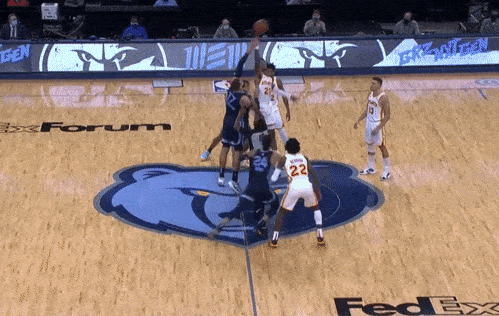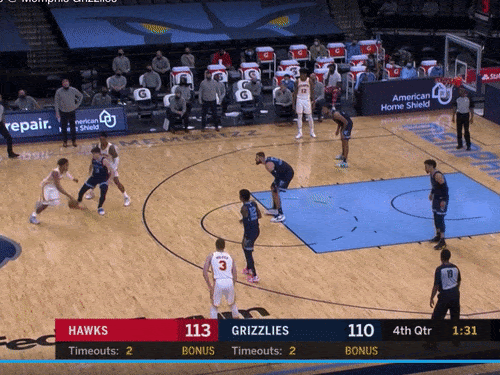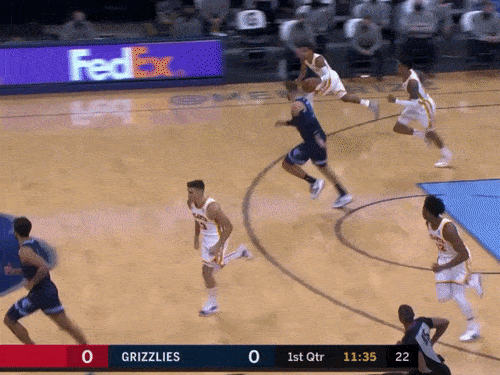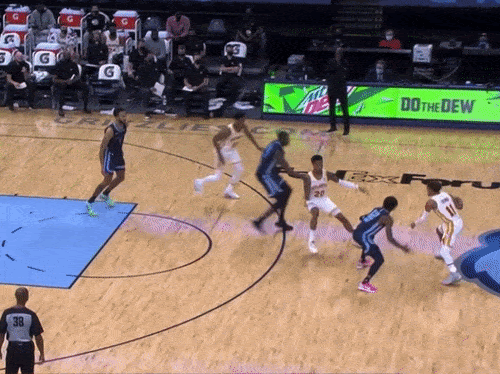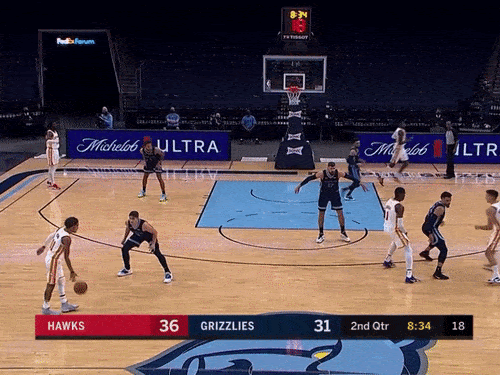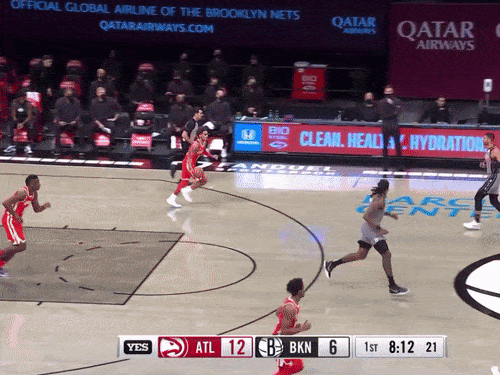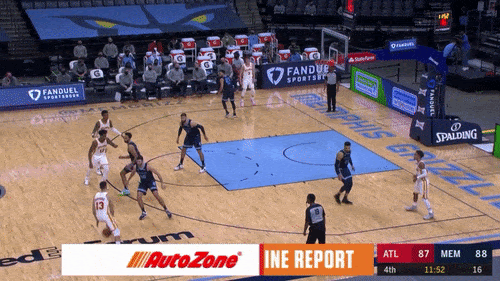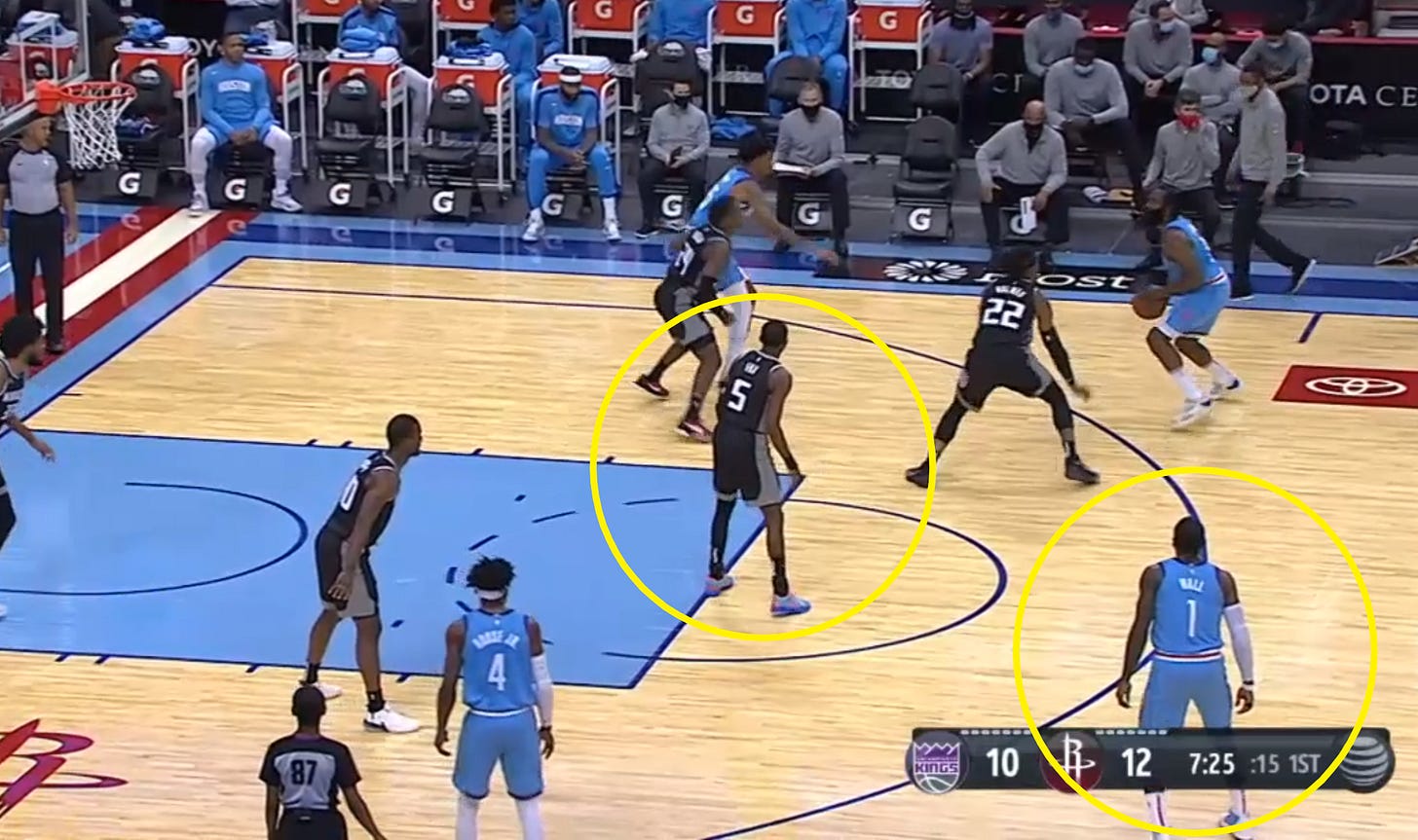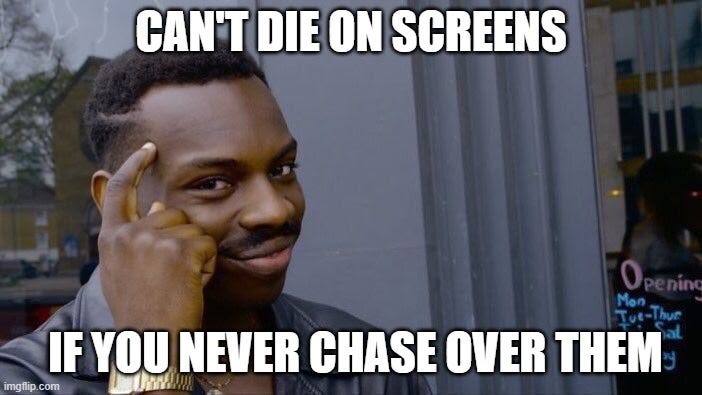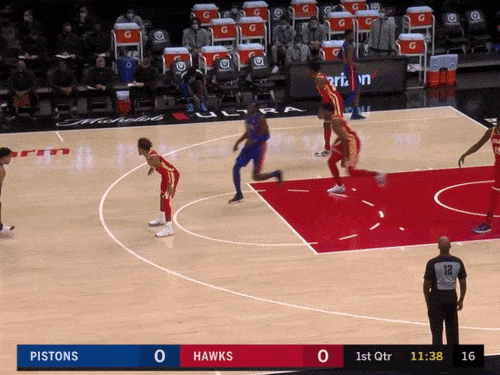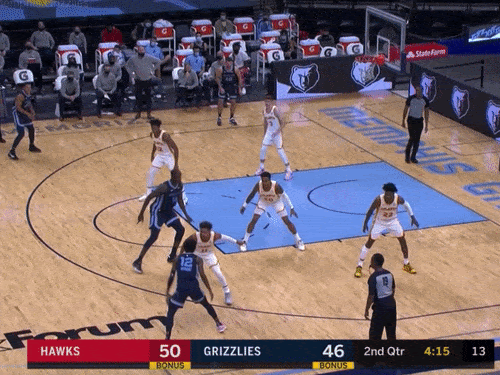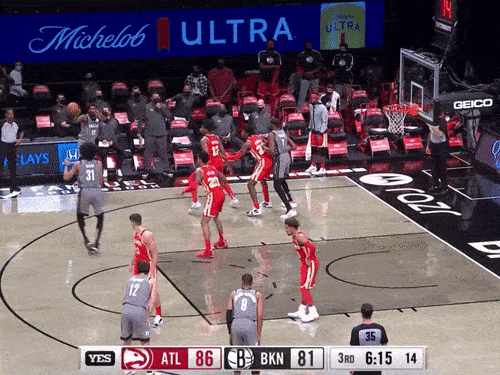Get in loser, we’re going to the playoffs!
Broke: Trae is a one-dimensional ball-hog. Woke: Trae is a multi-dimensional being.
This player summary is a public post, and the capstone to our deep dive in Trae Young’s game. If you want to go deeper, consider becoming a subscriber, and following along with us as we take a look at Trae’s games against the Grizzlies, Pistons and Nets.
I wanted to write about Trae Young because I’ve only seen his exceptional handles, beautiful floaters, and pick and roll highlights with John Collins. I don’t know how he plays within the flow of the game. He had great stats last year and made the All-Star Game, but what amount of that is substantively helping the Hawks’ chances of making the playoffs?
And what about the coaching, and the organization around Trae? Are the Hawks hindering Trae’s and the team’s defensive development by protecting him in the regular season? What about his license to shoot half court threes early in the shot clock, or the lack of a role for him off ball?
Last season, the Hawks (sans Vince Carter) were hatchlings. This year he has Rajon Rondo to run the second unit, Clint Capella to protect the rim, and Danilo Gallinari to cash jumpers and bully mismatches. John Collins, Cam Reddish, and De’Andre Hunter are another year older. So strap in, and enjoy the Trae Young experience.
A game powered by threes and floaters
Trae is less reckless than I expected. And much less ball dominant. He makes quick hit-ahead passes in transition. When Collins or Gallinari have a size mismatch in the paint, he finds them in spots where they can score effectively.
He doesn’t force too many shots, though as the team’s best player he has that leeway. When the shot clock is winding down and you think he has to isolate, he whips last-second passes to cutters for layups.
But Trae is still a showman. He takes deep, no pass, early shot clock 3’s, particularly on possessions after sinking his free throws. This one against the Grizz is open, but he launches this bomb seven seconds into the game — the scoreboard hasn’t appeared on the screen yet.
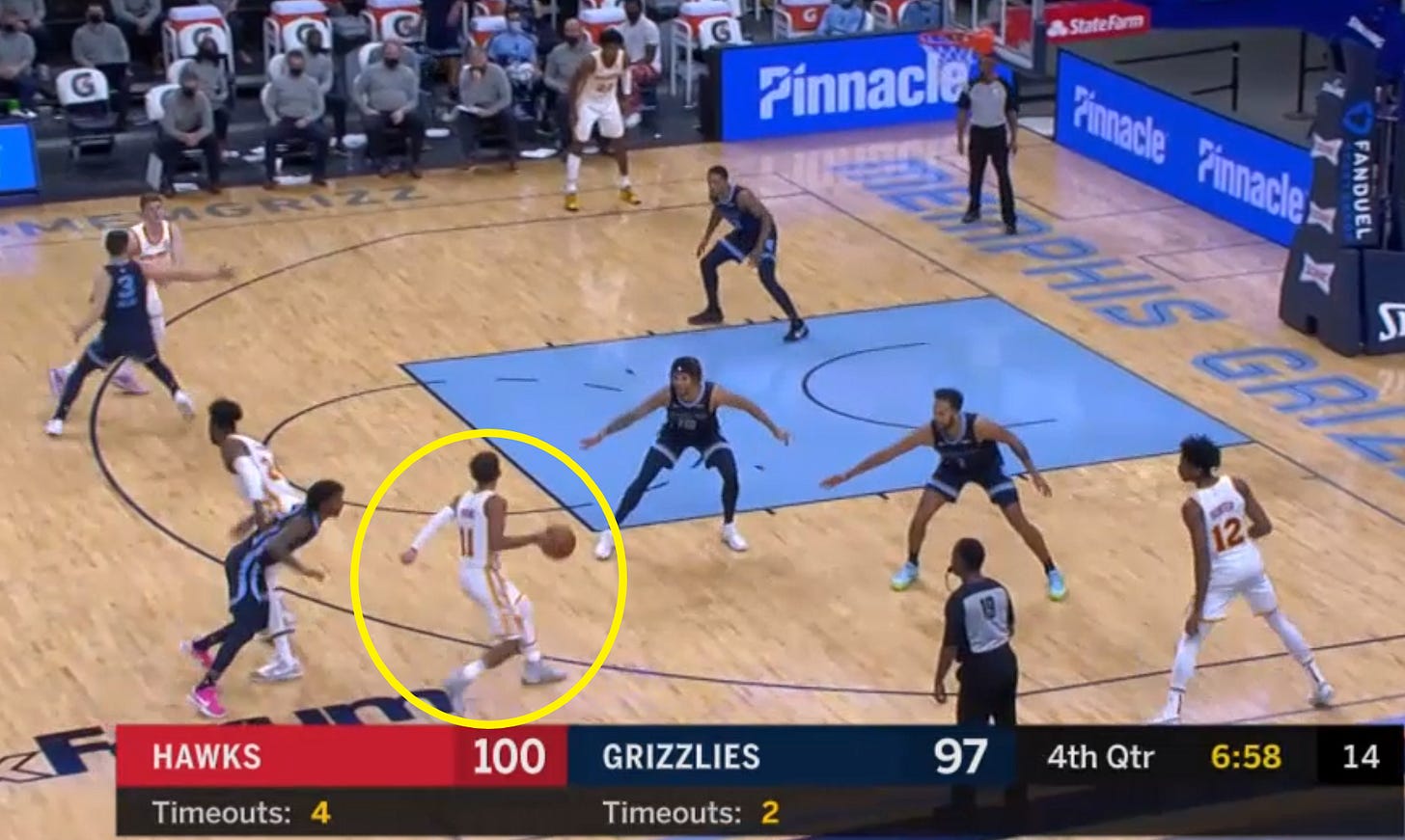
Trae unleashes his floater instead of getting to the rim. He uses it to throw off the defender’s timing, eliminating the threat of a shot block. For now, that floater is a crutch. Unless he dusts his defender off the dribble, he struggles to finish at the rim through contact.
He took a lot of floaters, but he’s only made 38.7% of his shots between 3-16 feet this season — below league average. That’s okay. These misses had nothing to do with the defense. Having a reliable shot he can get to repeatedly bodes well for his scoring efficiency.
Great decision-making in the half court
Trae’s vision, handle, and shot-making rescue late shot clock and clutch time possessions. Up by three with 90 seconds remaining, Trae targets Grayson Allen in the pick and roll and gets switched onto him. Trae drives into Jonas Valančiūnas’s help but fakes the behind the back pass, throwing the ball between his legs, while Allen bodies him up! The bamboozled Valančiūnas rushes to close out to Collins, leaving the lane open for an uncontested layup. Trae's ability to manipulate the defense to get a favorable matchup and then to eliminate the help defense is masterful.
Trae pushes the ball in semi-transition to create organic pick and rolls. Defenders pick him up as soon as he crosses half court to take away his 3 point shot. He leverages that aggressiveness. See how Trae ducks in behind Collins, causing Ja Morant to fall a half step behind the play.
Out of the traditional pick and roll, Trae can do it all. He throws the lob, hits the corner shooter, gets to his floater, or slams on the brakes mid-drive, absorbs contact, and gets to the line. If the big man shows above the 3 point arc, he can split the pick and roll or drop a slick pocket pass.
Here Gorgui Dieng and Ja Morant trap Trae against the sideline. The only play is the pass to Hunter at the top of the key, right? A crossover, between-the-leg dribble combination gets him in the lane for his floater. Take a look at the subtle body fake he gives to Kyle Anderson to make him think he’s going to toss the lob to Collins.
Before the pick and roll, Trae often receives a quick pitch so he can attack with a head of steam. Off this dribble handoff and Capela screen, both perimeter defenders chase Trae, who whips the ball to the open Bogdanović.
Like any lead ball handler, he commits turnovers, but his decision-making is sound. His dangerous passes are calculated risks that will reap rewards as he gets more comfortable making them. This half court heave looks like a Hail Mary, but Trae knows his personnel. Collins has the height and leaping advantage over Kyrie Irving and Joe Harris, and would be able to snag this pass if Trae didn't overthrow it.
He serves as the team’s inbounder on out of bounds plays. Despite his small stature, he rarely gets stuck in the air or under the rim without an outlet. Even off ball, he spots opportunities for his teammates to drop dimes. Watch how he signals for the lob before the diving Hunter realizes he’s open.
Trae shows lackadaisical effort off ball, but he still provides spacing
Unless it's a quick pitch, when Trae gives the ball up, he rarely gets it back. The ball is his battery and without it, he stalls. He’s a statue watching his teammates play 4 on 4.
Providing space and eliminating a defender from the play is useful. Here, Kevin Huerter drives in and hits an open floater. Regardless of the play’s result, this action is valuable. And notice, because Trae is such a potent shooter, defenders dare not sag off him to provide gap help.

The Hawks have a “Roll Safe” plan for Trae
Taller players shoot over him like he’s their little brother. And this isn’t going to change — you can’t teach height. But he is already a reliable positional defender; his teammates can trust he’s in the right spots. Trae gives consistent effort on defense — the most you can expect from a player burdened with the mental and physical loads of orchestrating an offense. He’s disciplined, he doesn't overhelp, gamble for steals, or get in the air to contest jumpshots. This is smart. It keeps him out of foul trouble and whether he jumps or not, he’s not blocking anyone’s shot.
On offense, Trae initiates contact to draw fouls, but he doesn’t keep that same energy on defense. He avoids rebounding scrums and only boxes out when he needs to. This is likely by design. Instead of jostling under the rim for rebounds he’ll never snare anyway, he’s available to receive the outlet pass and get out in transition. Overall, his effort and IQ were consistent, but not enough to make up for his physical limitations.
The Hawks’ defensive game plan protects Trae. He guards the opponent’s least threatening perimeter player. I predicted Trae would die on screens, but you...
Trae ices the ball handler in the pick and roll. If he falls behind the play, he ducks under screens or calls for switches. Off ball too, he frequently switches to save energy and limit the chances he’ll get hung up on a screen. When he lands on a bigger wing, the Hawks communicate to scram him out of unfavorable matchups. Look how seamlessly Trae and Collins execute this scram switch.
When challenged in isolation, which was rare — he spent the bulk of the games guarding Grayson Allen and Killian Hayes — he held up well, moving his feet to ward off drives to the rim. Here Trae gets switched onto Ja Morant, who the Grizzlies’ announcer refers to as a double espresso shot wearing a jersey. Trae gets into position to ice the pick and roll and send Morant towards the sideline, into Collins and Reddish. Instead, Morant drives left. Trae fends off the initial attack and when Morant goes behind his back to change direction, he competes to the end of the play.
Trae’s help defense is the biggest weakness in his game, but there’s room for improvement. Unlike the Grizzlies and Pistons, the Nets have lethal rim rolling centers in DeAndre Jordan and Jarrett Allen. They force the defender guarding the weak side corner to help off his man to muck up plays at the rim. On this rotation, Trae needs to beat Jarrett Allen to the top of the charge circle for any chance to affect the play. During the Nets game, dubbed the “Taurean Prince revenge game” by announcer Ian Eagle, Trae was slightly late on these rotations or ineffective due to his lack of size and explosiveness. And when the ball got kicked out to the corner, he wasn’t fast or long enough to close out effectively.
Trae don’t have to change for no one
Despite his last name, we have to remind ourselves how young he is. In his third season, he’s already leading an efficient NBA offense and his path to improvement is clear.
On the ball, Trae needs to trade the deep, no pass, early shot clock pull up 3’s, for pull up 3’s generated off pick and roll action. This isn’t the same criticism that “Playoff P” has when it comes to these types of shots. It’s the timing, not the distance.
That shot is available every possession. Why take it as soon as you come down the court? Any pass or action should produce a closer, more open look. And if not, then that shot can go up. Those shots bail out defenses. They don’t draw fouls. Sure when they go in, they demoralize the opponent, but when they miss, your teammates just ran up the court for nothing.
Off the ball, Trae is an untapped threat. Trae’s off ball movement would cause mismatches and botched switches. His teammates could pounce into open space created by his orbit’s gravity. But he doesn’t need to mimic Steph Curry’s non-stop movement to be effective off the ball. At the very least, the Hawks should put Trae in the weak side corner while his teammates run the offense. This would force Trae’s defender to either come off him early to defend plays in the paint and give up the pass for the 3, or stay attached to Trae and give up a shot at the rim.
Notably, these areas for improvement do not involve passing more to certain teammates, or changing how the offense fundamentally operates. Defensively, the Hawks are a long, athletic, switchy team with young legs. They don’t have the collective experience, but physically, they have the personnel to build a defense that can protect Trae Young — in the regular season. When the playoffs come (and they will come) for this team, what will happen when opponents target Trae? Will his offensive production dip as he expels more energy on defense? Will the defensive principles they drilled during the regular season hold up? Or will his physical limitations doom the Hawks’ season?


